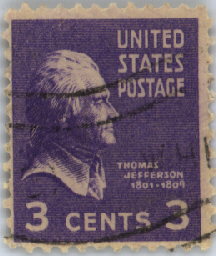The Congress Debates Independence
The news of Lexington and Concord flew from one local
community to another in the thirteen colonies. Within 20 days, it
evoked a common spirit of American patriotism from Maine to
Georgia.
For a map of the USA in 1775 click here
While the alarms of Lexington and Concord were still re-
sounding, the Second Continental Congress met in Philadelphia
on May 10, 1775. Its president was John Hancock, a wealthy
Boston merchant. Thomas Jefferson  "Our cause is just. Our union is perfect. Our internal
resources are great, and, if necessary, foreign assistance is
undoubtedly attainable.... The arms we have been compelled by
our enemies to assume, we will... employ for the preservation of
our liberties, being with one mind resolved to die free men rather
than live slaves."
"Our cause is just. Our union is perfect. Our internal
resources are great, and, if necessary, foreign assistance is
undoubtedly attainable.... The arms we have been compelled by
our enemies to assume, we will... employ for the preservation of
our liberties, being with one mind resolved to die free men rather
than live slaves."
 Even as the declaration was being debated, Congress took
the militia into continental service and appointed Colonel George
Washington commander in chief of the American forces. Yet in
spite of the military involvement and the appointment of a
commander in chief, the idea of complete separation from England
was still repugnant to some members of the Congress and to a
sizeable portion of the American people. It was obvious, however,
that the colonies could not forever remain half in and half out of
the British empire.
Even as the declaration was being debated, Congress took
the militia into continental service and appointed Colonel George
Washington commander in chief of the American forces. Yet in
spite of the military involvement and the appointment of a
commander in chief, the idea of complete separation from England
was still repugnant to some members of the Congress and to a
sizeable portion of the American people. It was obvious, however,
that the colonies could not forever remain half in and half out of
the British empire.
